
Panzer General is a 1994 computer wargame developed and published by Strategic Simulations Inc. (SSI). It simulates conflict during World War II. The designers of Panzer General were heavily influenced by the Japanese wargame series Daisenryaku.

Memoir '44 is a light wargame, or war-themed strategy board game, for two players created by Richard Borg, published in 2004 by Days of Wonder and illustrated by Julien Delval and Cyrille Daujean. The game can also be played with up to six players if played in teams and up to eight players in the "Overlord" scenarios that require two copies of the game. It received the 2004 International Gamers Award for General Strategy, 2-Player category and The Wargamer 2004 Award for Excellence. The game is published in English and French by Days of Wonder.

PanzerBlitz is a tactical-scale board wargame published by Avalon Hill in 1970 that simulates armored combat set in the Eastern Front of the Second World War. The game is notable for being the first true board-based tactical-level, commercially available conflict simulation (wargame). It also pioneered concepts such as isomorphic mapboards and open-ended design, in which multiple unit counters were provided from which players could fashion their own free-form combat situations rather than simply replaying pre-structured scenarios.
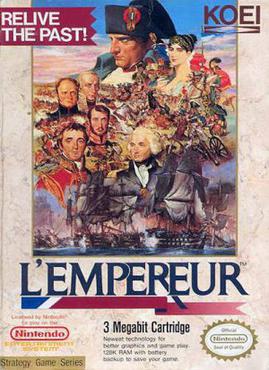
L'Empereur is a turn-based strategy video game for the Nintendo Entertainment System released by the Koei company in 1989.
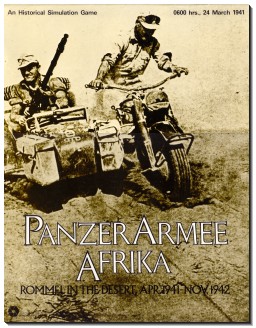
PanzerArmee Afrika, subtitled "Rommel in the Desert, April 1941 - November 1942", is a board wargame published by Simulations Publications, Inc. (SPI) in 1973 that simulates the World War II North African Campaign that pitted the Axis forces commanded by Erwin Rommel against Allied forces. The game was revised and republished in 1984 by Avalon Hill.
Battle Cry is a board wargame based on the American Civil War, designed by Richard Borg and published by Avalon Hill in 2000.

The Arab-Israeli Wars, subtitled "Tank Battles in the Mideast 1956–73", is a board wargame published by Avalon Hill in 1977 that simulates various battles during the Suez Crisis, Six-Day War and Yom Kippur War.

Tactical wargames are a type of wargame that models military conflict at a tactical level, i.e. units range from individual vehicles and squads to platoons or companies. These units are rated based on types and ranges of individual weaponry. The first tactical wargames were played as miniatures, extended to board games, and they are now also enjoyed as video games.
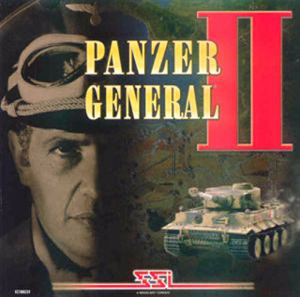
Panzer General II is a computer wargame by Strategic Simulations, Inc. Released October 15, 1997, Panzer General II is the sixth SSI game in the Panzer General series and the first in the "Living Battlefield" series. It takes place during World War II, covering events from the Spanish Civil War in 1938 to hypothetical battles in 1946. In the April 2000 issue of the magazine PC Gamer, it was voted the 44th best computer game of all time, and the highest rating in the Panzer General series. The game was re-released in 2010 on GOG.com.
Panzer Leader is the sequel to Avalon Hill's PanzerBlitz game.

Axis & Allies is a 1998 computer wargame closely based on the Axis and Allies: Classic board game.
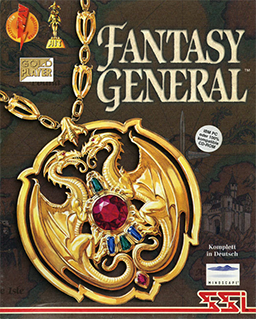
Fantasy General is a fantasy computer wargame published by Strategic Simulations in 1996. Its structure was taken from the game Panzer General with some modifications to the base system. It was the third in the Five Star General series. It allows gaming against other human players by email. It was published on GOG.com in May 2015 with support for Windows, macOS, and Linux after GOG Ltd acquired the copyright to the title.
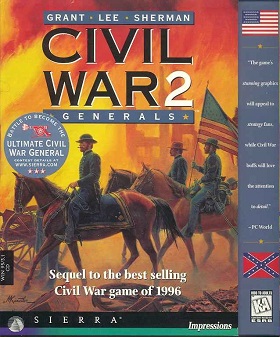
Grant, Lee, Sherman: Civil War Generals 2 is a computer game published by Sierra On-Line in 1997. It is the sequel to Robert E. Lee: Civil War General.

Robert E. Lee: Civil War General is a 1996 computer wargame developed by Impressions Games and published by Sierra On-Line. Set during the American Civil War, it tasks the player with leading the Confederate Army of Northern Virginia to victory against the Union Army of the Potomac. Impressions sought to make Civil War General accessible to wargame newcomers by streamlining its gameplay, and the Panzer General series was a reference point for its design and title.

People's General is a turn-based computer wargame developed by Strategic Simulations, Inc (SSI). It was released in September 1998 in North America and Europe. The game focuses on early 21st century warfare in Asia. People's General, or PeG as it is commonly known, followed SSI's successful 5 Star General Series of World War II war games and their sequel, Panzer General II (PG2). It uses the same game dynamics as these earlier games—turn-based movement & fighting with military units on a hex based map. PeG uses substantially the same "Living Battlefield" game engine as PG2 but features higher quality graphics and many new features.
The Panzer Grenadier series of board wargames is Avalanche Press's series of World War II and The Korean War tactical land combat. The first game in the series was released in 2000.
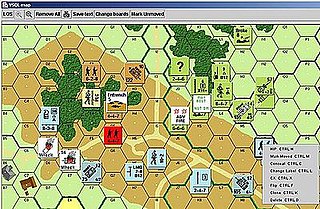
A computer wargame is a wargame played on a digital device. Descended from board wargaming, it simulates military conflict at the tactical, operational or strategic level. Computer wargames are both sold commercially for recreational use and, in some cases, used for military purposes.

Gary Grigsby's Pacific War is a 1992 strategy wargame released by Strategic Simulations, Inc. It covers World War II in the Pacific between the Japanese Empire and the Allies, which include the United States, the British Empire, the Netherlands, Australia, New Zealand, Canada, the Philippines, and China. The main map of the game stretches from north of the Aleutians to southern New Zealand and Australia, and from the eastern coast of India to the West Coast of North America. It includes aircraft carrier operations, amphibious assaults, surface bombardments/engagements, strategic bombing, kamikazes, and the submarine war against naval and merchant shipping.
Panzer Campaigns is a series of operational level wargames developed by John Tiller Software. The early series episodes were published until 2010 by HPS Simulations. There are currently twenty-six titles in the series, spanning the various fronts of World War II.

KampfPanzer: Armored Combat, 1937–40 is a board wargame published by Simulations Publications Inc. (SPI) in 1973 that simulates the first battles involving battle tanks.
















